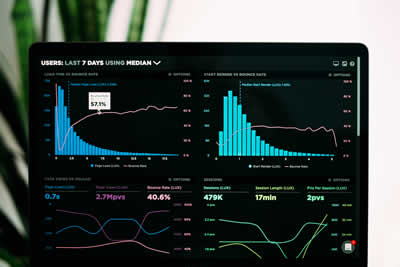Let’s say someone signs up on your platform using a phone number. Seems harmless, right? But how do you know it’s real? Or where it’s from? Or if the number even belongs to the person signing up?
That’s where a reverse phone lookup feature comes in.
Whether you’re building a customer-facing app or an internal tool, reverse lookup helps verify and enrich phone data. It allows your system to retrieve public information tied to a number—like geographic origin, carrier, line type, and sometimes even the name of the person or business behind it.

For example, if a new user registers with a number that begins with 347, a quick
347 area code lookup tells you they’re probably based in New York City. That’s valuable context. You can tailor onboarding content, assign region-specific reps, or flag location mismatches. And that’s just the start.
What Reverse Lookup Can Actually Do
Reverse phone lookup tools do more than just validate numbers. They help:
- Verify users and prevent fake signups
- Identify spam or high-risk numbers
- Route calls or support tickets by region
- Enrich CRM profiles for better sales targeting
- Personalize the user experience with location-based services
Whether you're in fintech, ride-sharing, logistics, healthcare, or any SaaS environment, integrating a lookup system into your app gives you data that enhances both security and customer experience.
Step 1: Pick the Right Reverse Lookup API
Building your own phone number database isn’t realistic—it would be expensive, hard to maintain, and often inaccurate. Instead, rely on APIs that already do the heavy lifting.
Here are some reliable reverse lookup APIs you can choose from:
🔹 Numverify
Provides validation, carrier detection, line type, and location data. It’s developer-friendly, with a free tier for basic usage.
🔹 Twilio Lookup API
Great for U.S. numbers. Includes caller name (CNAM) info and real-time number type detection. Good for fraud detection and advanced personalization.
🔹 Trestle
Goes beyond reverse lookup, providing enriched data like email addresses, demographics, and alternate contact points.
🔹 Abstract API
Fast and easy for developers. Provides line type, carrier, location, and number validity checks in JSON format.
Compare each one based on the data you need, cost per lookup, request limits, and ease of integration. Some APIs focus on telecom data, others on enrichment and verification.

Step 2: Build the API Integration
Once you've chosen your API, it’s time to connect it to your app. Most APIs follow a RESTful structure and return results in JSON format. You can integrate them into the backend of your app using almost any programming language.
To give you an idea of what's involved, here’s a basic example using Node.js with the Numverify API:
const axios = require('axios');
const phoneNumber = '+13471234567';
const accessKey = 'YOUR_ACCESS_KEY';
axios.get(`https://apilayer.net/api/validate?access_key=${accessKey}&number=${phoneNumber}`)
.then(response => {
const data = response.data;
console.log(`Valid: ${data.valid}`);
console.log(`Location: ${data.location}`);
console.log(`Carrier: ${data.carrier}`);
console.log(`Line Type: ${data.line_type}`);
})
.catch(error => {
console.error('Lookup error:', error);
});
Once the data comes back, you can store it, act on it, or trigger workflows—like assigning a lead to a local sales team or blocking a flagged number.
Step 3: Decide How to Use the Data
The lookup is only useful if you put the data to work. Here are some smart ways to use it in your app:
✅ User Verification
Compare the phone number’s region with the user’s claimed location or address. If they don’t match, request additional verification.
🧠 Data Enrichment
Add the line type (mobile, landline, VoIP), location, and carrier info to your CRM or internal user profile. This helps sales, support, and automation teams personalize interactions.
📍 Regional Routing
If your platform includes customer support or delivery operations, area code data lets you route requests to the right team or region.
🚩 Fraud Detection
If a number looks suspicious (e.g., temporary VoIP numbers or mismatched regions), flag it for review or add friction to the signup flow.

Step 4: Respect User Privacy
Reverse lookup may seem like harmless metadata, but it still touches personal data. That means you need to handle it with care.
Here’s what to keep in mind:
- Be transparent: If you’re using phone data to verify or enrich user profiles, include it in your privacy policy.
- Don’t store what you don’t need: Only keep lookup data if it serves a business or user experience purpose.
- Stay compliant: Depending on your audience, you may need to follow regulations like GDPR, CCPA, or CAN-SPAM.
Give users the ability to manage their phone data, especially if you’re connecting it with other identifiers like email or name.
Step 5: Test, Scale, and Optimize
Start with a small implementation. Run tests to make sure:
- API response times are fast
- Lookups don’t slow down your app
- Your UI presents the data clearly
- You handle errors and timeouts gracefully
Then scale it. Add bulk lookup support. Tie it to marketing automation. Link it with customer scoring models. The more data you gather, the smarter your system becomes.

Final Thoughts: It’s All in the Digits!
Building a reverse phone lookup tool
into your app is more than a cool feature - it’s a practical move that supports security, personalization, and smarter customer service. You don’t need to build from scratch. With the right API and a bit of integration, you can unlock the power hidden in every phone number.
So, say the next time someone enters a number starting with
347, don’t just let it sit in a database. Run a 347 area code lookup. Let that little bit of metadata improve everything from fraud detection to user onboarding.
Because in modern apps, every data point should work harder - and every phone number should tell you more.

If you'd like to learn more about what we provide, why not take a look at how we can help?
Boost your skills with our market-leading online courses at super-low prices.




























